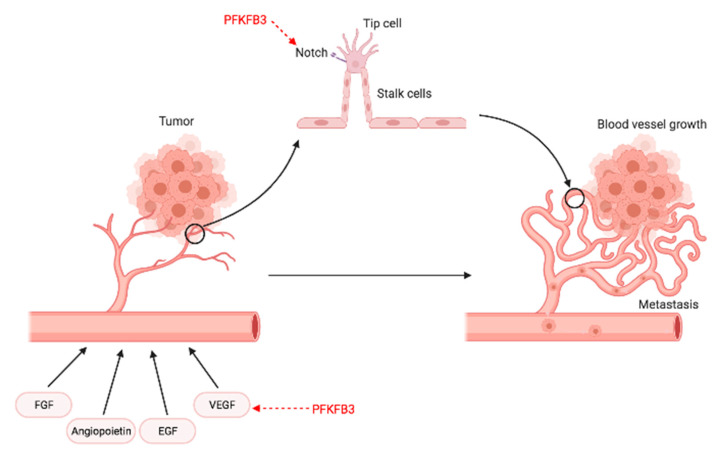Figure 9.
Schematic representation of angiogenesis, a process in which new blood vessels are developed from pre-existing vessels, allowing for tumor progression and metastasis. During angiogenesis, vascular permeability is increased in the existing vessels, which allows for extravasation, degradation of the extracellular matrix, and release of sequestered growth factors. When exposed to stimulating factors (such as VEGF, FGF, and EGF), endothelial cells proliferate, migrate, and form primary sprouts. Vessel sprouting by migrating tip and proliferating stalk cells is controlled by genetic signals, such as Notch. Further proliferation, followed by the synthesis of a new basement membrane and maturation, leads to assembly of lumen-bearing cords. PFKFB3 levels affect angiogenesis through mediating VEGF activity, where PFKFB3 upregulation results in enhanced VEGF activity. Moreover, silencing of PFKFB3 impairs angiogenesis, while PFKFB3 overexpression overrules the pro-stalk activity of Notch. Abbreviations: FGF—fibroblast growth factor, EGF—endothelial growth factor, VEGF—vascular endothelial growth factor. Created with Https://Biorender.Com/.

